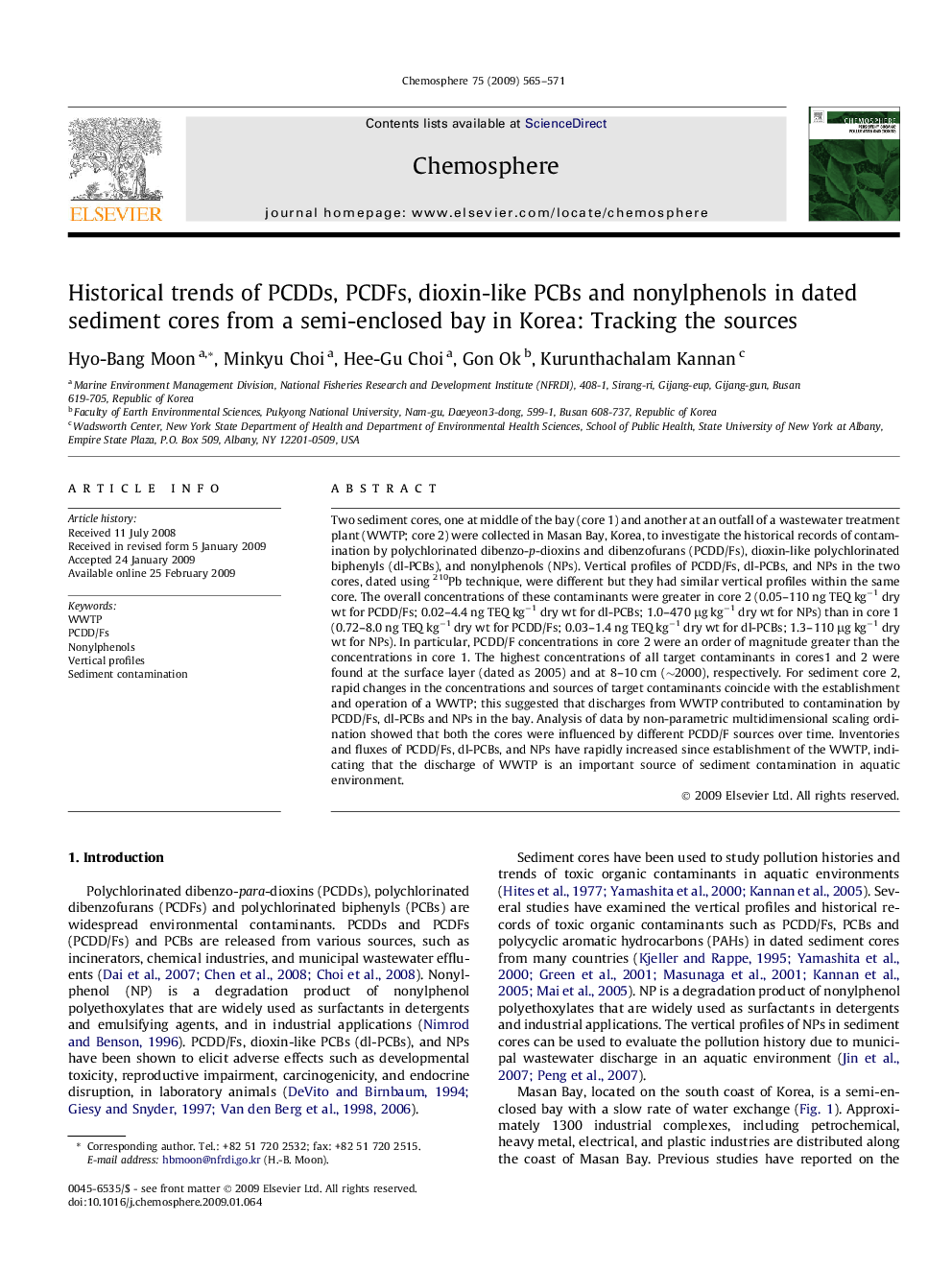| Article ID | Journal | Published Year | Pages | File Type |
|---|---|---|---|---|
| 4413362 | Chemosphere | 2009 | 7 Pages |
Two sediment cores, one at middle of the bay (core 1) and another at an outfall of a wastewater treatment plant (WWTP; core 2) were collected in Masan Bay, Korea, to investigate the historical records of contamination by polychlorinated dibenzo-p-dioxins and dibenzofurans (PCDD/Fs), dioxin-like polychlorinated biphenyls (dl-PCBs), and nonylphenols (NPs). Vertical profiles of PCDD/Fs, dl-PCBs, and NPs in the two cores, dated using 210Pb technique, were different but they had similar vertical profiles within the same core. The overall concentrations of these contaminants were greater in core 2 (0.05–110 ng TEQ kg−1 dry wt for PCDD/Fs; 0.02–4.4 ng TEQ kg−1 dry wt for dl-PCBs; 1.0–470 μg kg−1 dry wt for NPs) than in core 1 (0.72–8.0 ng TEQ kg−1 dry wt for PCDD/Fs; 0.03–1.4 ng TEQ kg−1 dry wt for dl-PCBs; 1.3–110 μg kg−1 dry wt for NPs). In particular, PCDD/F concentrations in core 2 were an order of magnitude greater than the concentrations in core 1. The highest concentrations of all target contaminants in cores1 and 2 were found at the surface layer (dated as 2005) and at 8–10 cm (∼2000), respectively. For sediment core 2, rapid changes in the concentrations and sources of target contaminants coincide with the establishment and operation of a WWTP; this suggested that discharges from WWTP contributed to contamination by PCDD/Fs, dl-PCBs and NPs in the bay. Analysis of data by non-parametric multidimensional scaling ordination showed that both the cores were influenced by different PCDD/F sources over time. Inventories and fluxes of PCDD/Fs, dl-PCBs, and NPs have rapidly increased since establishment of the WWTP, indicating that the discharge of WWTP is an important source of sediment contamination in aquatic environment.
